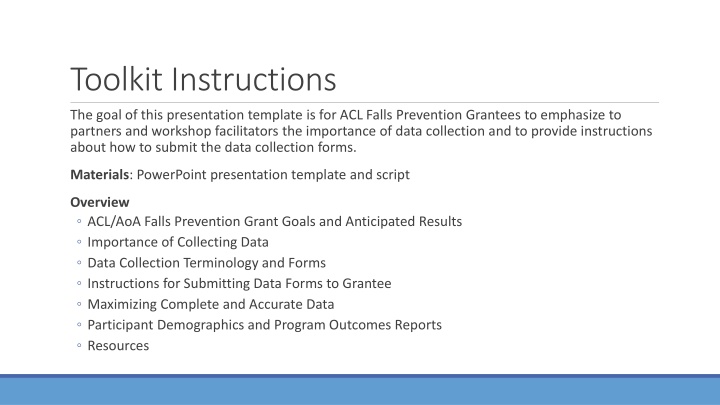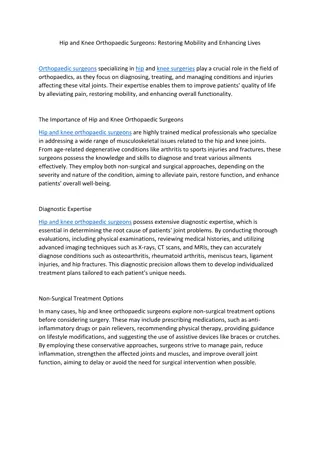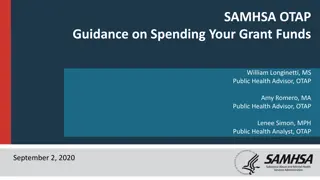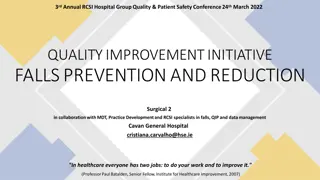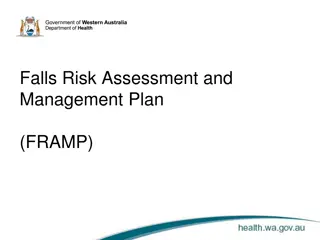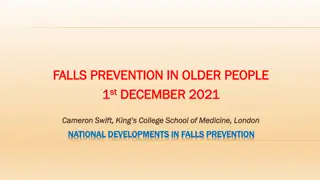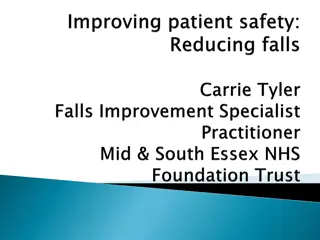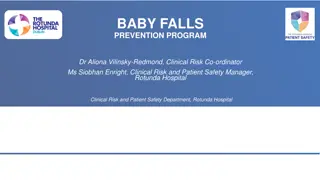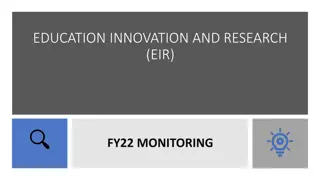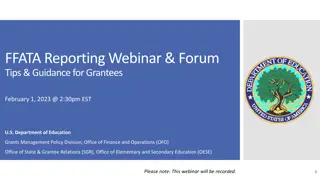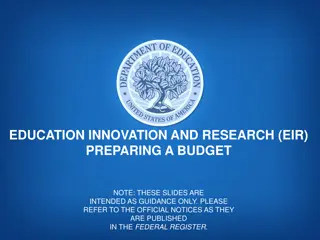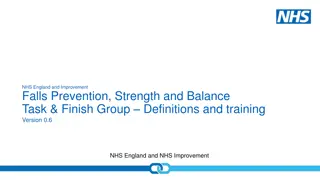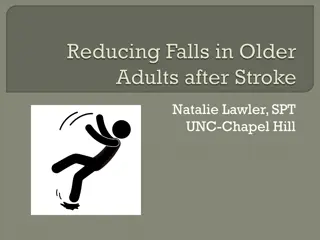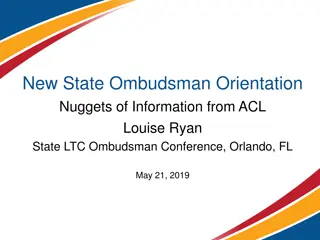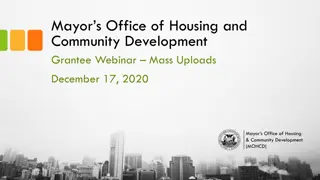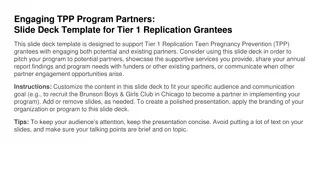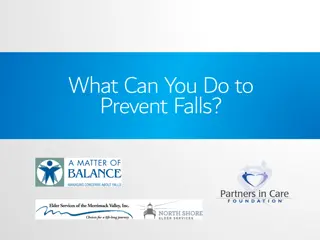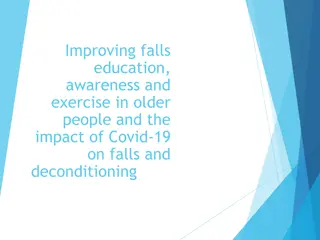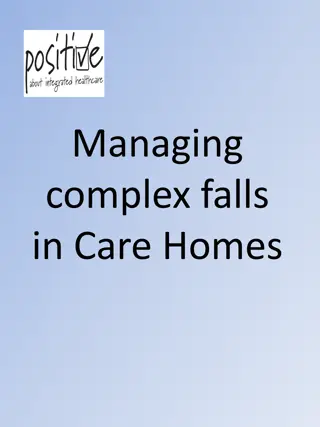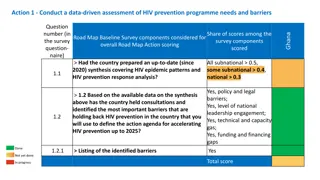ACL Falls Prevention Grantees Data Collection Guidance
This presentation template emphasizes the importance of data collection for ACL Falls Prevention Grantees, providing instructions on submitting data collection forms, understanding grant goals, maximizing data accuracy, and highlighting the significance of collecting data for program success and sustainability.
Download Presentation

Please find below an Image/Link to download the presentation.
The content on the website is provided AS IS for your information and personal use only. It may not be sold, licensed, or shared on other websites without obtaining consent from the author.If you encounter any issues during the download, it is possible that the publisher has removed the file from their server.
You are allowed to download the files provided on this website for personal or commercial use, subject to the condition that they are used lawfully. All files are the property of their respective owners.
The content on the website is provided AS IS for your information and personal use only. It may not be sold, licensed, or shared on other websites without obtaining consent from the author.
E N D
Presentation Transcript
Toolkit Instructions The goal of this presentation template is for ACL Falls Prevention Grantees to emphasize to partners and workshop facilitators the importance of data collection and to provide instructions about how to submit the data collection forms. Materials: PowerPoint presentation template and script Overview ACL/AoA Falls Prevention Grant Goals and Anticipated Results Importance of Collecting Data Data Collection Terminology and Forms Instructions for Submitting Data Forms to Grantee Maximizing Complete and Accurate Data Participant Demographics and Program Outcomes Reports Resources
Falls Prevention Data Collection Toolkit
Grant Goals Significantly increase the number of older adults and adults with disabilities at risk of falls who participate in evidence-based community programs to reduce falls and falls risks Implement innovative funding arrangements to support evidence-based falls prevention program(s) both during and beyond the grant period; and, Embed program(s) into an integrated, sustainable evidence-based prevention program network via centralized, coordinated processes
Anticipated Results Reach [x] participants through the [x] program, [insert program description] Reach [x] participants through the [x] program, [insert program description] Reach [x] participants through the [x] program, [insert program description] [Agency] requires program implementation sites to administer participant pre- and post-survey data to track participant engagement and program outcomes. Completing the forms is entirely voluntary for participants. They may choose to skip certain questions or choose not to complete the form at all. For more information about the grant goals, activities, partnerships, and anticipated results, view the [state] grantee profile: https://www.ncoa.org/center-for-healthy- aging/falls-resource-center/falls-prevention-grantees-falls-resource-center/falls- prevention-grantee-profiles/
Importance of Collecting Data The Administration for Community Living, the National Council on Aging, and [insert agency here] use data to: Determine program reach and participant demographics (i.e., ethnicity, age, gender) so we can better target our efforts to serve our community. Report participant outcomes to determine the impact and value of the programs. Show grant funding agency and legislators that they are spending their money wisely on these programs. Learn what technical assistance we can provide to better support you in implementing and sustaining programs. Inform future program needs. Conduct research to determine the reach and value of programs.
Data Collection Form Terminology Program Program: An evidence-based falls prevention program Workshop Workshop: A class or group meeting through which a program is delivered to participants Session Session: A single meeting of a workshop, e.g., an hour-long class period or an encounter Facilitators/Leaders Facilitators/Leaders: The people who are trained to deliver the falls prevention programs Participant Participant: The people who enroll in the programs
Data Collection Form Terminology Host Organizations Host Organizations: The organizations that sponsor workshops, hold the license for a programs, train or employ leaders, and arrange for the use of implementation sites Implementation Sites Implementation Sites: The physical locations where programs are delivered
Data Collection Forms Host organization information form Falls program information cover sheet Falls program leader data collection script Participant attendance log Participant information form (pre-survey) Participant post-session survey All forms can be downloaded at the following webpage: [Insert your agency s webpage, or link to the forms on the National Falls Prevention Grantee Resources webpage: https://www.ncoa.org/center-for-healthy-aging/falls-resource-center/falls-prevention- grantees-falls-resource-center/falls-prevention-grantees/]
Data Collection Forms Available in Multiple Languages English Spanish Chinese Hmong Korean Vietnamese Cambodian (Khmer)
Instructions for Submitting the Data Forms Compile the host organization information form, falls program information cover sheet, attendance log, participant pre-surveys, and participant post- surveys. Within [timeframe, i.e. two weeks] of completing a program workshop, send all of the data forms to [agency] by: [Insert your agency s centralized data collection instructions here, i.e. scan and email the forms to example@ncoa.org]
Maximizing Complete and Accurate Data Build in time to complete forms during the beginning of the first and last workshop sessions. Review the Program Leader script that highlights the importance of completing the forms. Host a Session Zero to allow participants more time to complete the pre- survey. Tools and tips sheets for hosting a Session Zero can be found here: https://www.ncoa.org/center-for-healthy-aging/cdsme-best-practices- toolkit/centralized-coordinated-logistical-processes/#intraPageNav1 Walk through the surveys together with the participant.
Maximizing Data Collection: Addressing Barriers Have bilingual assistance to translate questions not easily understood, or be available to help with form completion. Note that the data collection forms are available in English, Spanish, Cambodian, Chinese, Hmong, Korean, and Vietnamese. For questions with scales, consider creating large laminated print cards depicting the scales. For questions asking about a timeframe, e.g., number of falls in the past 3 months , help the group by giving a time frame. Bring a few extra copies of the forms printed with large font (size 16 or larger) for individual with visual impairment. Have 2-3 volunteers walk around and assist participants with form completion.
Participant Demographic and Program Outcome Reports Every [insert timeframe here, i.e. quarterly] months, the [agency] will send a program and participant outcome report to show your organization s leadership, partners, and program participants the value and impact of evidence-based falls prevention programs and assist with future program planning needs. The participant demographics report will include information about participants age, sex, race, ethnicity, living arrangement, chronic conditions, education, activity limitations, and referral from a health care partner. The program outcome report will include outcome data from participants pre- and post-surveys
Resources Falls Prevention Group Leader Script Tip Sheet: Maximizing Complete and Accurate Data Tools and Tips Sheets for Hosting a Session Zero Privacy and Security Basics for Falls Prevention Evidence-Based Programs PowerPoint [Insert additional resources here]
Questions? Contact [Insert your agency s contact information here]
